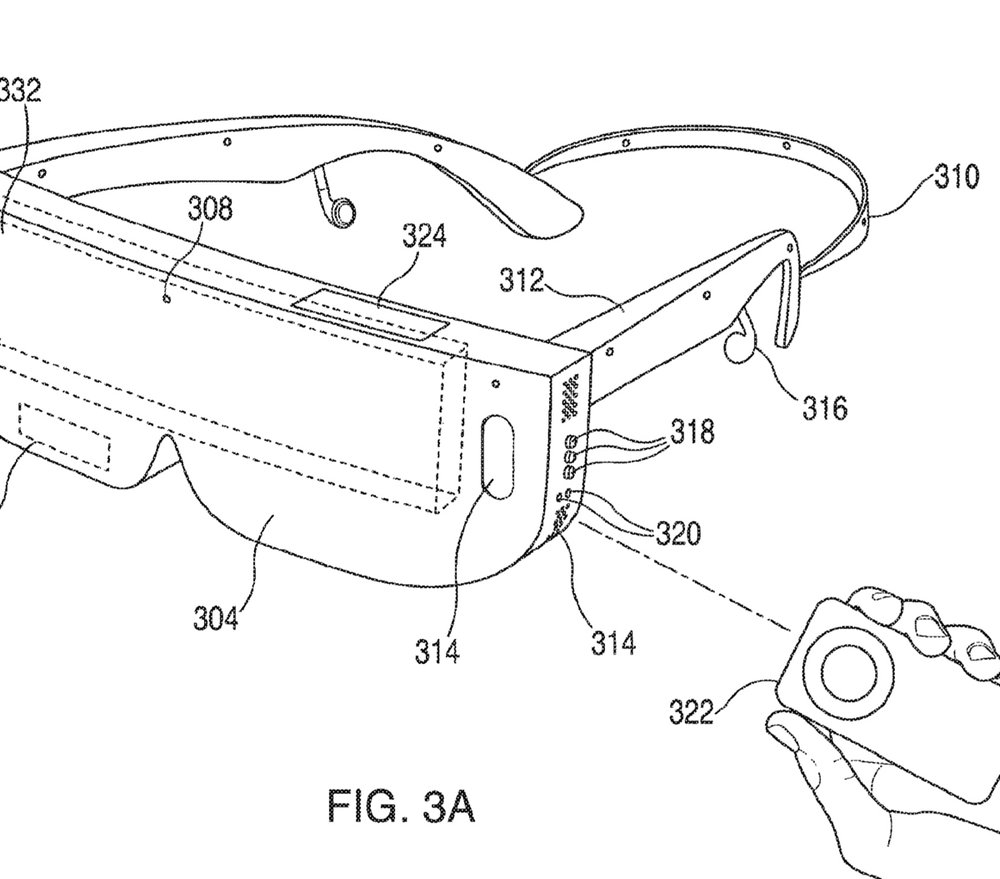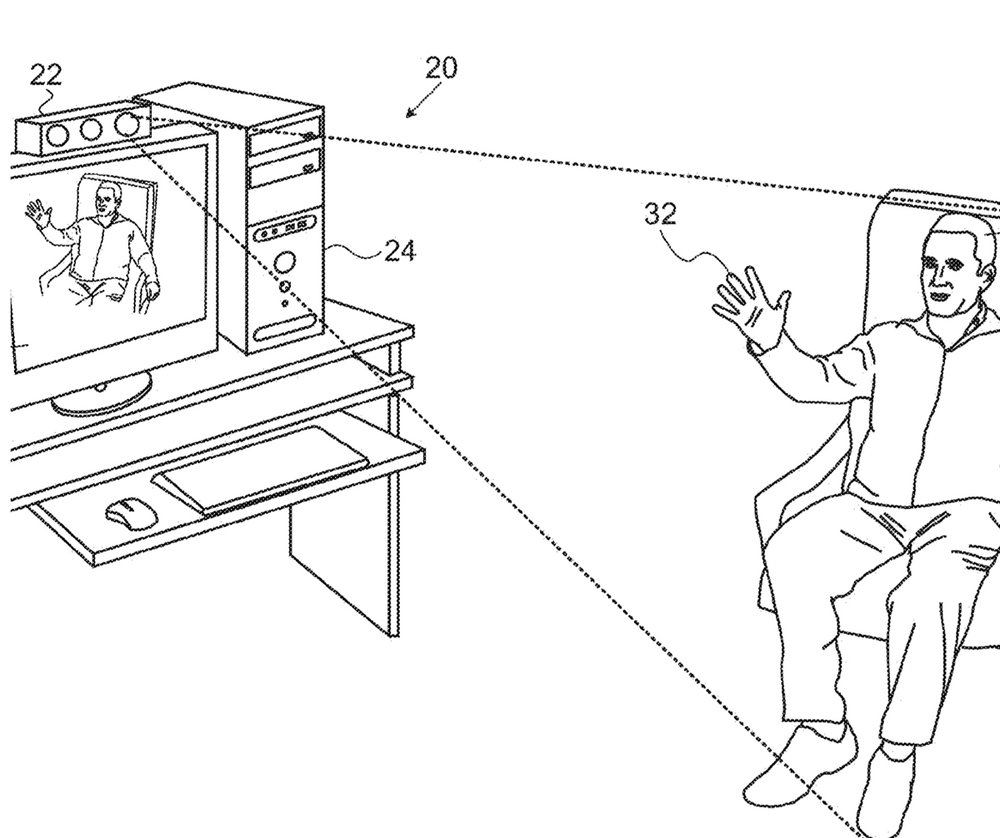Let the iGlasses rumors revive. Apple has been granted a patent (number 9,595,237) for a “head-mounted display apparatus for retaining a portable electronic device with display.” It’s for a headset that allows an iPhone to be mounted on it.
According to the patent, a portable device (the iPhone, although the iPod is also mentioned) can be physically coupled to the head-mounted display and worn on a user’s head. Each device “may be allowed to extend its features and/or services to the other device for the purpose of enhancing, increasing and/or eliminating redundant functions between the head-mounted device and the portable electronic device.”

Apple says there’s is a need for an improved head-mounted display system, particularly a system that temporarily integrates or merges both mechanically and electronically a head-mounted device with a portable electronic device. Such a configuration would allow, among other things, e user to view media on a private display. This isn’t the first patent to mention “iGlasses” (my moniker, not Apple’s). For example, patent 9,482,869 involves augmented reality/virtual reality (AR/VR) goggles. However, patent number 9595,237 is the first one to mention the use of a remote control with such a device.
Apple has also been granted a patent (number 9,594,950) for “depth-mapping with enhanced resolution,” which hints at a Mac with a gesture-based interface. Gesture recognition is when your computer interprets human gestures via mathematical algorithms. Said gestures can originate from any bodily motion or state, but usually come from the arm or face. Apple has filed other patents regarding the technology, including patents 20120036433, 8018579, and 20100149099.

Actually, Leap Motion has already brought gesture computing to the Mac via its $79.99 Leap Motion Controller and provides a 3-D workspace that recognizes intuitive gestures. The folks at San Francisco-based Leap Motion say it’s the first product in history to accurately sense the individual movements of all 10 of the user’s fingers, and can also track objects like a pen.
Finally, Apple has been granted a patent for (9,595,195) for a “wireless vehicle system for enhancing situational awareness,” which hints at future CarPlay hardware from the Cupertino, California-based company.
Vehicles are sometimes provided with safety equipment such as parking sensors, lane departure warning equipment, and blind-spot detection systems. A parking sensor can be used to alert a driver when a vehicle is nearly in contact with a parked car or other stationary object, but has limited range and cannot be used to increase safety when a vehicle is being driven on a highway.

Lane departure warning equipment can sense when a driver has started to drift into an adjacent lane, but doesn’t warn the driver about vehicles in the adjacent lane. Blind spot detection systems can use radar or an infrared sensor to monitor a driver’s blind spot, but don’t offer complete coverage of areas around the driver’s vehicle and provide no information to the driver on the nature of intrusions into the driver’s blind spot. Apple says that it “would therefore be desirable to be able to provide improved systems for providing drivers in vehicles with enhanced situational awareness when driving on a road.”
Of course, Apple files for — and is granted — lots of patents by the U.S. Patent & Trademark Office. Many are for inventions that never see the light of day. However, you never can tell which ones will materialize in a real product.
